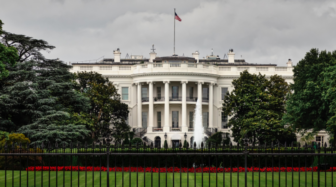By Jenny Mandel
A coalition of environmental and other groups is stepping up a campaign against exporting natural gas from a facility near Lusby, Md., raising questions about the track record of the owner, Dominion Resources Inc., over a fire at an unrelated West Virginia facility.
The Blue Racer natural gas processing plant in Marshall County, W.Va., caught fire during the night in September 2013, triggering an automatic shutdown of the facility before the fire eventually burned out, according to Dominion, which operates the plant as a joint venture with Caiman Energy, an operator in the Utica Shale formation.
Dominion says the incident, which did not damage any off-site property or cause any injuries, was an unfortunate event but illustrates the effectiveness of emergency planning at the natural gas facility. The company began a slow restart of the plant, which splits liquids-rich Utica Shale gas into components like methane and propane, earlier this week.
But a coalition of environmental, health and citizens groups views the Blue Racer accident as a warning of potentially greater danger in a liquefied natural gas export plant that Dominion has proposed for development on the Chesapeake Bay at an existing LNG import facility.
Coalition leader Chesapeake Climate Action Network (CCAN) has joined with numerous local riverkeeper and community groups throughout the region to oppose the redevelopment of Dominion’s Cove Point LNG import plant into an export facility (EnergyWire, Dec. 19, 2013).
They argue that the plant itself would spew excessive air emissions and risk public safety, while the natural gas that would feed into it comes with air and water hazards stemming in part from the hydraulic fracturing used to produce it.
The opposition groups recently got a boost from involvement by the high-profile environmental group 350.org, whose founder, Bill McKibben, has been a leader in the fight against federal approval of the Keystone XL oil sands pipeline. McKibben said the Cove Point project could become a battleground for the Obama administration’s support for natural gas exports.
Now, the project’s local opponents are drawing attention to the Blue Racer accident and calling on Dominion to address how it reflects safety problems that could crop up at Cove Point.
Asking for answers
In a letter to Dominion CEO Thomas Farrell, the groups asked the company to disclose what caused the accident and what safety and engineering lessons should come from it.
Stressing Dominion’s assurances that the Blue Racer plant, completed in June of last year, was a “world class facility” with top safety protections, the groups questioned how Maryland residents could trust the “almost identical assurances of safety and reliability vis a vis the Cove Point plant” expansion.
Jim Norvelle, a spokesman for Dominion, said the company’s own investigation has not yet found the source of the natural gas that leaked during the Sept. 21, 2013, incident or of the spark that set the resulting airborne plume on fire. But he protested that the plant did not “blow up” as the environmental groups claim.
Rather, he said, the natural gas cloud ignited in a fire that was brought under control by local fire crews to prevent further damage. The plant’s automatic shutdown stopped the flow of gas into the facility, he said, and firefighters controlled the blaze until residual fuel in the processing lines was exhausted.
Asked about local residents’ assertion that something had blown up, the Dominion representative said there was no piece of equipment that exploded. “I only know what the residents said they heard — I have no reason to doubt them,” Norvelle said. “I’m sure that when the vapor cloud ignited, it was loud. We know the fire was dramatic from video taken by several people and posted on YouTube,” he added.
Norvelle said the small residential community of Kent, W.Va., located about half a mile from the plant, was never in danger. “While its residents had a good view, they and their homes were not affected by the fire on Sept. 21. The fire stayed inside the facility and only damaged a small section of the facility. No one inside or outside the facility was injured.”
But he said the West Virginia facility is entirely different from the proposed liquefaction capacity that Dominion wants to add to Cove Point. “I think that they’re trying to make the comparison that these are similar facilities. They’re not similar facilities,” he stressed.
Dale Allison, a co-founder of local group Calvert Citizens for a Healthy Community who lives about a half mile from Dominion’s Cove Point LNG plant, said in a call with reporters yesterday that he initially got involved with the project out of concern for the plant’s air emissions.
The Chesapeake Climate Action Network, which is organizing much of the coalition’s work, says that if completed, the LNG export plant — which would include a dedicated natural gas power plant to superchill the gas for shipment — would be the fourth-largest climate polluter in Maryland.
But Allison said he soon came to question the project’s safety, in part because of single-walled natural gas storage tanks on the site that he believes do not adequately protect against leaks or other damage.
“I believe that we have a regulatory agency that’s not viewing safety in the right balance, at this point,” said Allison, referring to the review that FERC conducts for facilities like the Cove Point plant.” He described the agency’s regulatory process as a “rubber stamp” for industry.
“I’m forced, as a citizen, to become knowledgeable enough to try to understand what’s going on at that facility, what’s a hazard, and what do I have to do to protect my family.”
Mike Tidwell, president of the Chesapeake Climate Action Network, painted accidents as an inevitable consequence of natural gas operations like those proposed for the Cove Point export expansion. “When you’re dealing with liquefied gas and compression and billion-dollar processes, things like this happen,” he said.





